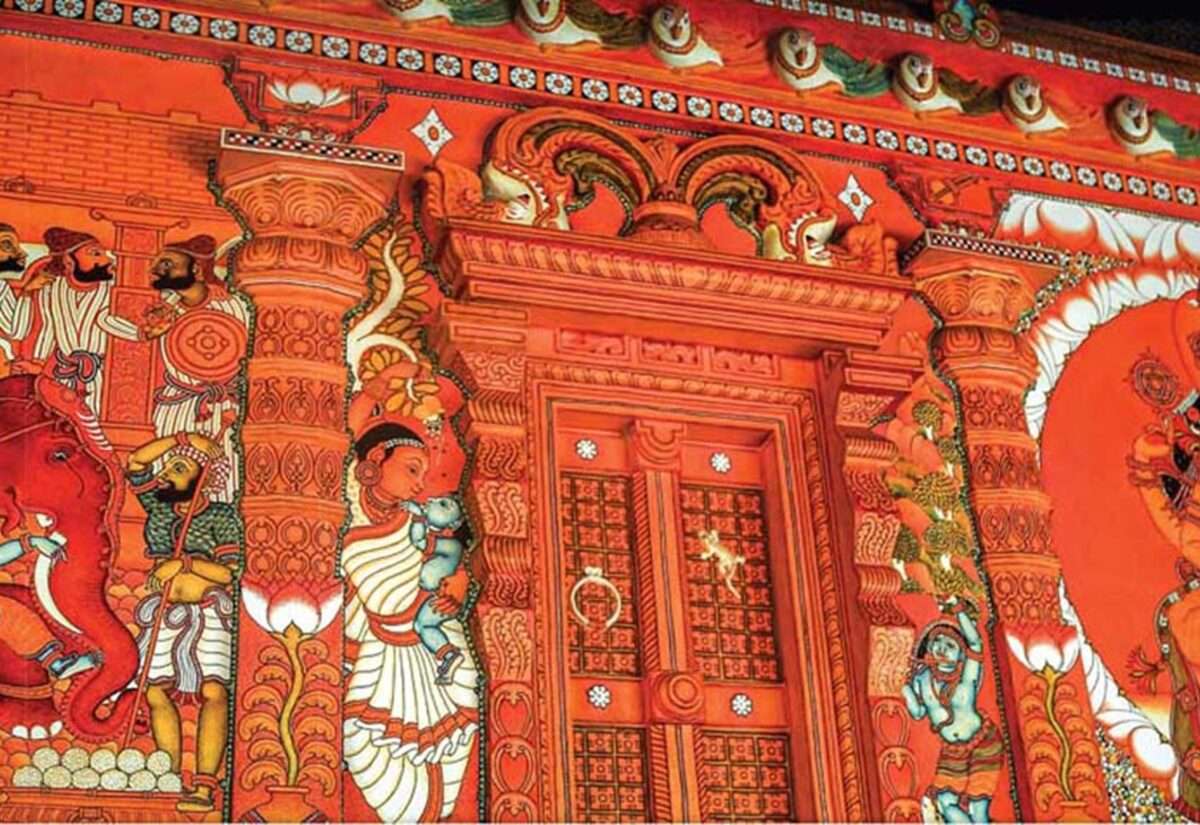
i
ndia, a land rich in cultural heritage and diverse artistic traditions, has long been a canvas for various forms of art. Among these, the art adorning the walls of its ancient temples holds a significant place. Murals and frescoes in Indian temples are not just decorative elements; they are profound expressions of spirituality, culture, and history. These art forms have played a pivotal role in the religious and social life of India, leaving an indelible mark on its cultural landscape.
- The Historical Context
Murals have been a significant part of Indian temples since ancient times, dating back to the Ajanta and Ellora caves. These caves, adorned with exquisite paintings, set the standard for religious and artistic expression in Indian temples.
- Spiritual Narratives on Walls
Temple murals are visual scriptures, narrating Hindu epics and Puranas. They offer symbolic meanings and spiritual teachings, like Lord Shiva’s life in Thanjavur’s Brihadeeswarar Temple. The art features deities, celestial beings, and mythological scenes, allowing devotees to engage with their faith.
- Aesthetic and Cultural Significance
Indian temple murals are aesthetic masterpieces, preserving the vibrant beauty and intricate details of ancient art. Artists used natural pigments and innovative methods to ensure longevity. The frescoes reflect the cultural milieu of their times, providing insights into socio-political conditions, fashion, customs, and daily life.
- Regional Variations
India’s diverse cultural heritage is evident in its regional temple murals. The north features intricate carvings from the Rashtrakuta dynasty, while the south showcases vibrant frescoes from the Chola and Vijayanagara periods. Odisha’s ancient temples combine tribal art with classical themes, while Kerala’s murals feature bold outlines and Hindu mythology.
“Indigenous dances are not merely performances but sacred rituals that connect us to the heartbeat of the earth.”
- Preservation and Revival
Temple murals, despite their historical significance, have been neglected. Organizations, art historians, and conservationists are working to preserve and restore these artworks. Interest is growing in reviving traditional techniques and training artists.
Murals in Indian temples represent India’s spiritual and cultural heritage, connecting the past with the present. They connect mythology, history, and artistic traditions, ensuring their stories and beauty remain inspiring for generations. Celebrating these sacred walls symbolizes the timeless bond between the divine and human spirit.






